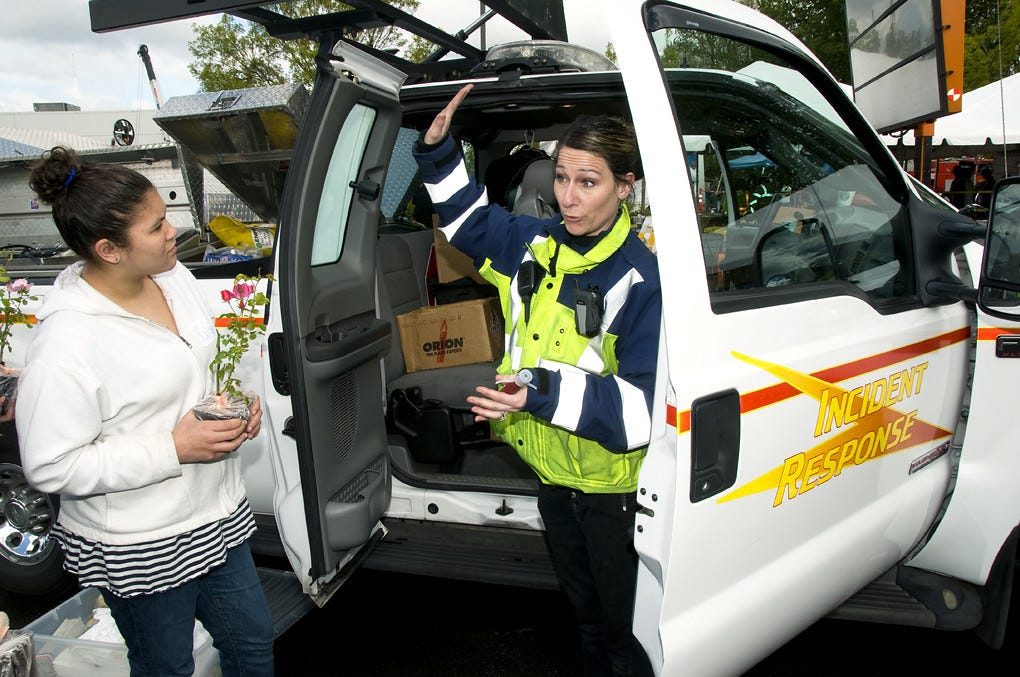Chris Harder: A Political Bridge: Economic Opportunity
I believe our Legislature can see that there’s a common grievance among many Oregonians that they can address—the days of zip codes, identities, and backgrounds determining economic outcomes must end.
Housekeeping
Welcome Coos County Commissioner Melissa Cribbins to our contributor community!
Look forward to Chapter 3 of Rediscovering the Oregon Way this Saturday.
Now to the post!
Principal at Coraggio Group, a strategy and leadership management consulting firm. Former Director of Business Oregon, the state's economic development agency.

We live in a divided country. A nation where we struggle to work and live next to those who are different than us. Oregon is certainly no exception. Our politics are increasingly polarized, resulting in views on important issues—the environment, education, taxes, public safety, etc.— that are combative, argumentative, and entrenched.
We desperately need to find common ground, if only to prove that we can solve serious problems alongside those who may hold different beliefs, belong to a different party, or come from different life experiences. Finding this common ground requires an intentional commitment to work together.
One area that is ripe for collaborating on, bridging our ideological divide, and promoting bipartisanship is economic development, particularly as it relates improving economic opportunity for those who identify as Black, Indigenous, and People of Color (BIPOC), and our rural communities.[1]
While members of these communities often find themselves on opposite sides of the political spectrum—more than 60% of voters in rural Oregon counties voted for Trump in the 2020 election[2] and national exit polls indicate that 87 percent of Black voters, 65 percent of Hispanic/Latinx voters and 61 percent of Asian voters voted for Biden[3]—their current economic challenges are very similar: both BIPOC and rural communities have been left out of our state’s economic growth; and, both groups are at risk of being further left behind as economic opportunity continues to trend toward the “haves.” Our economy has been created to mostly benefit people like me: an urban, well resourced, white, privileged male.
A Shared Challenge
I’ve spent the bulk of my career in economic development, both at the state and local level and in states as different as North Carolina and Oregon. Most recently, I was the director of Business Oregon, the state’s economic development agency. In that position I had a birds-eye view of the many challenges our communities face. One thing that always struck me when traveling the state was how much in common many residents of our rural communities had with those in Oregon’s (mostly urban) BIPOC communities. Too often, both struggle with income instability, a lack of opportunity for sustained wealth creation, and access to livable-wage jobs.

The economic prospects for rural Oregon have been less than bright for far too long. Rural (or non-metro) Oregon has historically had higher unemployment rates than metro Oregon. This has been the case since at least 1990, the farthest back these data are available. From 1990 onward, the long-run average of rural unemployment rates has tracked a full two percentage points higher than the long-run average of metro unemployment rates.[4] Similarly, job creation since the Great Recession has been significantly slower in rural areas of Oregon compared to the state’s metropolitan areas. According to the Oregon Employment Department:
By 2019, the number of jobs in rural Oregon had barely budged above the levels seen back in 2001; rural Oregon gained just 16,000 jobs, adding 7 percent. Meanwhile, job growth in Oregon’s metro areas has been much stronger since 2001. Job growth in the Portland-Vancouver-Hillsboro metro outpaced the rest of the state, with a 25 percent gain between 2001 and 2019, amounting to an additional 247,000 jobs. All other metro areas combined gained 23 percent, adding 117,000 jobs.[5]
Those persistent economic struggles are shared in many regards by members of Oregon’s BIPOC communities. One of Oregon’s persistent challenges is the lack of equitable economic outcomes for People of Color. With the exception of the state’s Asian population—which admittedly is a very broad demographic classification—People of Color in Oregon face higher unemployment rates and lower wages than non-Hispanic white workers.
As of the 2018 U.S. Census Bureau’s American Community Survey, People of Color in Oregon had an unemployment rate of 7.3 percent, compared to 5.6 percent for the non-Hispanic white population. A more granular look at the data indicates that the unemployment rate for Black Oregonians was 10.8 percent, 12.1 percent for American Indian, and 7.0 percent for Hispanic or Latino.[6]
The opportunity divide amongst different races/ethnicities is also apparent when looking at wages. In a recent report, the Oregon Employment Department found:
Over the last decade, the wage disparity by race and ethnicity has remained consistent. According to the U.S. Census Bureau’s Longitudinal Employer-Household Dynamics (LEHD), Asian and non-Hispanic white workers have the highest wages. In 2018, wages for Black, American Indian, multiracial, and Hispanic or Latino workers of any race ranged between $39,000 and $45,000 annually – at least $10,000 less than white workers and $20,000 less than Asian workers.[7]
By most economic indicators—job creation, unemployment rate, wages, poverty levels, and educational attainment, to name just a few—rural and BIPOC communities face similar economic prospects.

A Bipartisan Economic Opportunity Agenda
Confronting this challenge is our opportunity. These shared economic struggles can form the basis of a shared campaign for explicit and intentional action by the state to give more Oregonians the economic opportunities they deserve and require to thrive. While the COVID pandemic and its impact on Oregon workers is a developing situation that will continue to change, long-standing disparities will exist, and get worse, without targeted intervention from the state’s leaders.
This campaign would not only be the interest of the “have nots,” but the whole of Oregon. An economy with such significant disparities is not sustainable. The needs are urgent. The opportunity to find common ground, put political differences aside, and collaborate is now.
In the upcoming legislative session, there is an opportunity for elected officials from both sides of the aisle, both sides of the Cascades, and all backgrounds to prioritize economic development. The chosen intervention must go beyond the standard base budget support for agencies such as Business Oregon or small one-time program appropriations.
Economic opportunity must be a top priority on the legislative agenda. If we are going to move the dial, the state’s response must be significant in size and inclusive in shape. It must include partners from inside and outside of State government, such as affinity-based groups, leaders of community institutions, religious organizations, rural collaboratives, small business support organizations, and local/regional economic development agencies.
Creating opportunity is not as complex as it may seem. In fact, the state can make a tremendous amount of progress by merely focusing on the basics of modern economic development. Investments should focus on funding 21st century infrastructure, such as access to broadband, capital and mentoring for small businesses and entrepreneurs, access to livable-wage jobs, and enhancing resources targeted to spur innovation and research & development. When making these investments, however, we must always ask, “Who will benefit?”
Now is the time for Democrats and Republicans, Trump supporters and Biden supporters, conservatives and liberals in Oregon to align around a comprehensive and sustained economic opportunity agenda focused on BIPOC and rural communities.
For too long, the economic destiny of too many Oregonians has been hampered by racial and geographic biases. We can upend that narrative, though.
We can and should write a story in which every Oregonian gets the support they deserve. It may sound like a fairy tale ending, but I believe our State Legislature can see that there’s a common grievance among many Oregonians that they can address—the days of zip codes, identities and backgrounds determining economic outcomes must come to an end.
**************************************************************
Keep the conversation going:
Facebook (facebook.com/oregonway)
Twitter (@the_oregon_way)
Check out our podcast:
**************************************************************
[1] For purposes of this article, “rural Oregon” includes any county characterized as “non-metropolitan” by federal data sources. Rural counties in Oregon include: Baker, Clatsop, Coos, Crook, Curry, Douglas, Gilliam, Grant, Harney, Hood River, Jefferson, Klamath, Lake, Lincoln, Malheur, Morrow, Sherman, Tillamook, Umatilla, Union, Wallowa, Wasco, and Wheeler.
[2] Office of Oregon Secretary of State. (2020). November 3, 2020 General Election Abstract of Votes, US President. sos.oregon.gov
[3] Exit poll results and analysis for the 2020 presidential election. (n.d.). The Washington Post. Retrieved January 5, 2021, from https://www.washingtonpost.com/elections/interactive/2020/exit-polls/presidential-election-exit-polls/
[4] State of Oregon Employment Department. (2017). The Employment Landscape of Rural Oregon. QualityInfo.org.
[5] State of Oregon Employment Department. (2020). Turning Point 2020: Oregon’s Workforce from Expansion to Pandemic. QualityInfo.org. [6] Ibid. [7] Ibid.



The statement "enhancing resources targeted to spur innovation and research & development" sounds like pablum to mask another tired, debunked strategy - R&D tax credits. See https://www.ocpp.org/2015/04/13/blog20150413corporation-tektronix-truth-subsidy/ . Yes, "When making these investments, however, we must always ask, 'Who will benefit?'," and we also have to ask if there's really any reason to believe cause and effect claimed by the measures' promoters. Allocation of resources need to pass a "but for" test - but for this investment x behavior would not happen. The business community has long ignored that. See, for example, https://www.blueoregon.com/2011/03/capital-gains-guru-goes-missing/